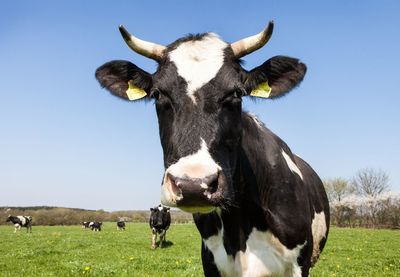Antibiotic Use By The Livestock Industry And The Rise Of Antimicrobial Resistance: A History And Assessment Of The United States Federal Government Response
- Student
- Bridget Carmody
- College(s)
- College of Science
- Faculty Advisor
- Susanne Wengle
- Class Year
- 2021

The resistance of bacteria, fungi, parasites, and viruses to antimicrobials, known as AMR, has grown rapidly in recent decades. It is generally accepted that the overuse of antimicrobials in livestock production plays a significant role in causing AMR. As the demand for meat increases across the world, it is essential to develop best practices for raising livestock that does not endanger the health of future generations.
The United States federal government has sought to regulate livestock production practices to reduce the risks related to rising antimicrobial resistance, largely through regulations by the Food and Drug Administration (FDA), with the United States Department of Agriculture (USDA) also playing an important legislative role.
This paper examines the history and effectiveness of federal policies and provides recommendations as to future regulatory actions.
My research revealed that one of the main shortcomings of current regulations relates to the collection of antimicrobial use data which, if improved, could help further clarify the links between antibiotic use in livestock and human public health. The collaboration between the federal government and the pharmaceutical and livestock industries in creating guidelines for action potentially limits the effectiveness of policies, although this is debated by stakeholders, interest groups, and academic observers. These findings and recommendations are based on interviews with regulators at the USDA and the FDA along with stakeholders involved with the Animal Health Institute, Keep Antibiotics Working and Kansas State University’s College of Veterinary Medicine.
My research suggests that increased federal funding and attention towards the collection of comprehensive on-farm data would be beneficial, along with devoting more resources towards the research of effective alternatives, which would thus limit the need for antibiotics to rare instances when an animal has a serious health condition. Additionally, the public and regulators should address the continuing debates as to whether antimicrobial use for disease prevention in animals is a dangerous practice that merits further regulatory limitations.